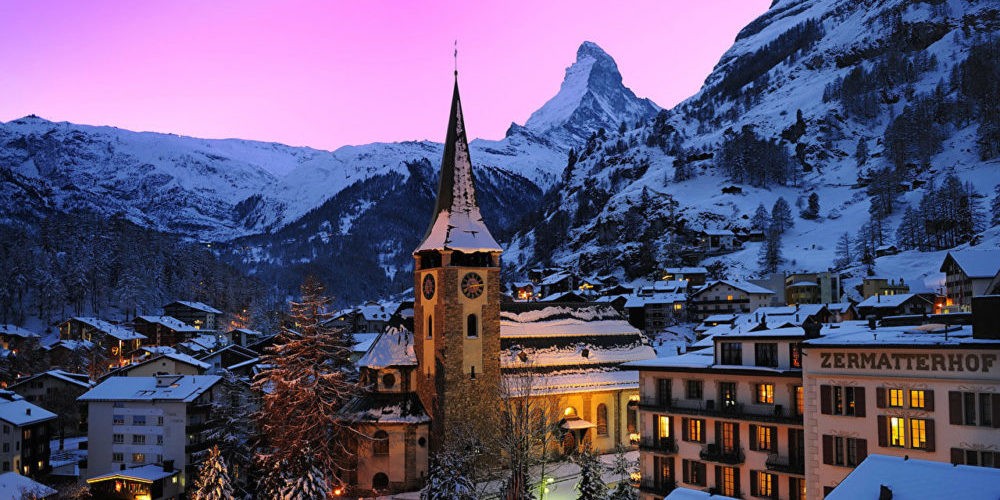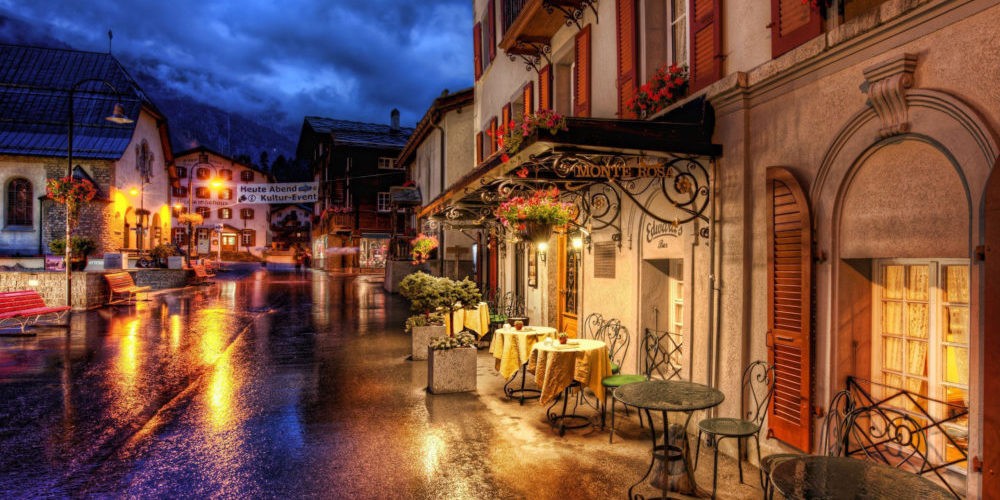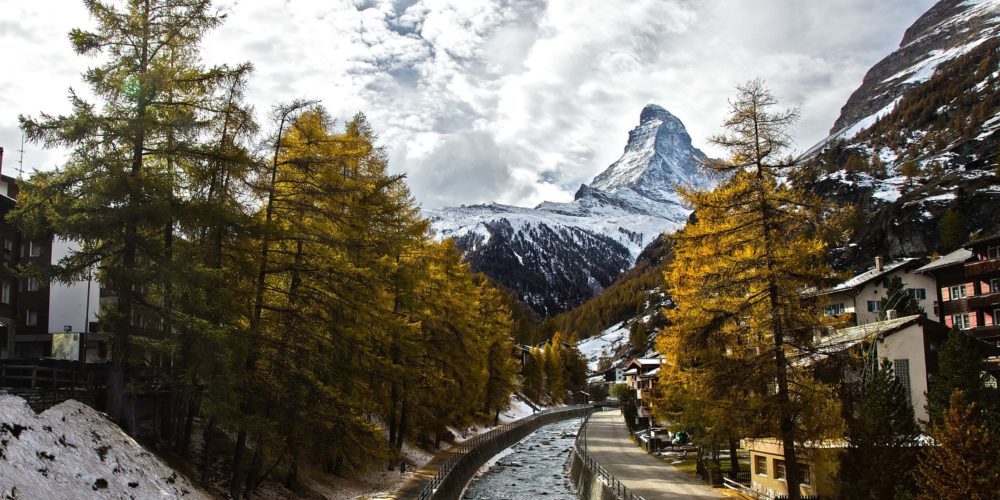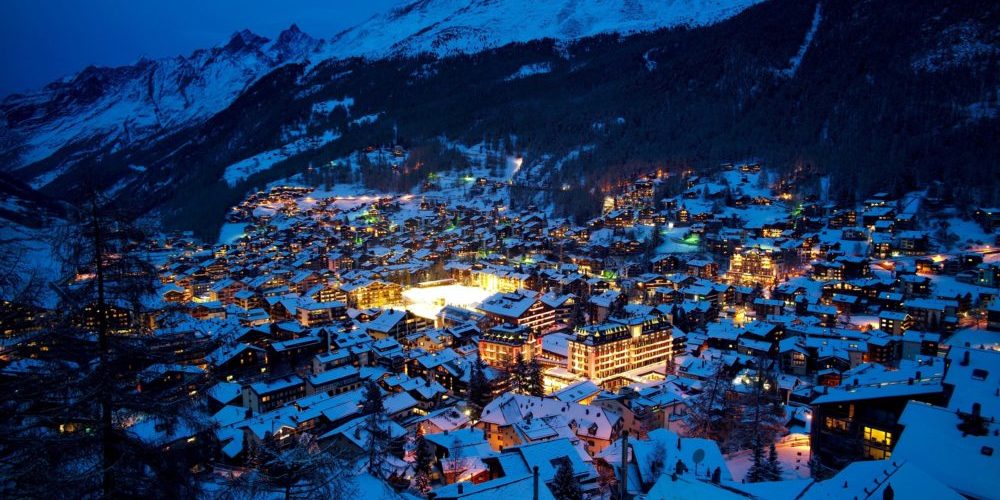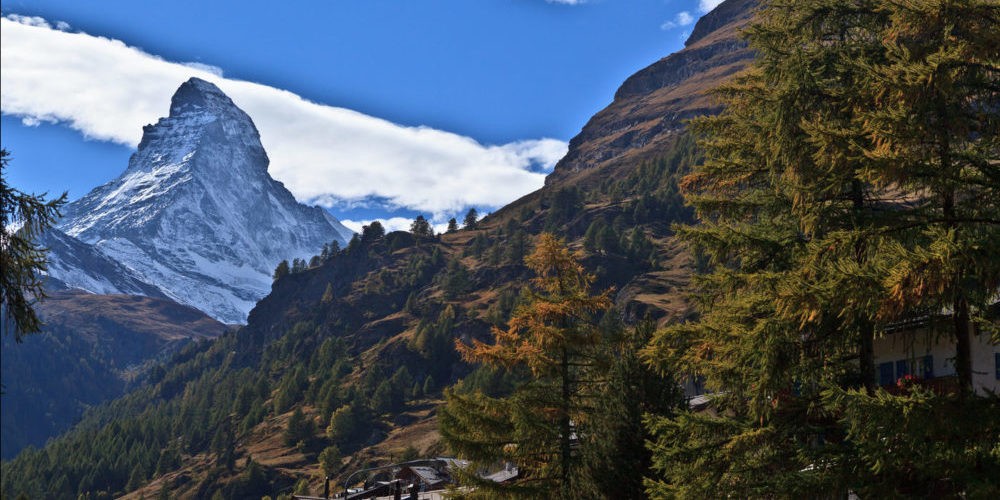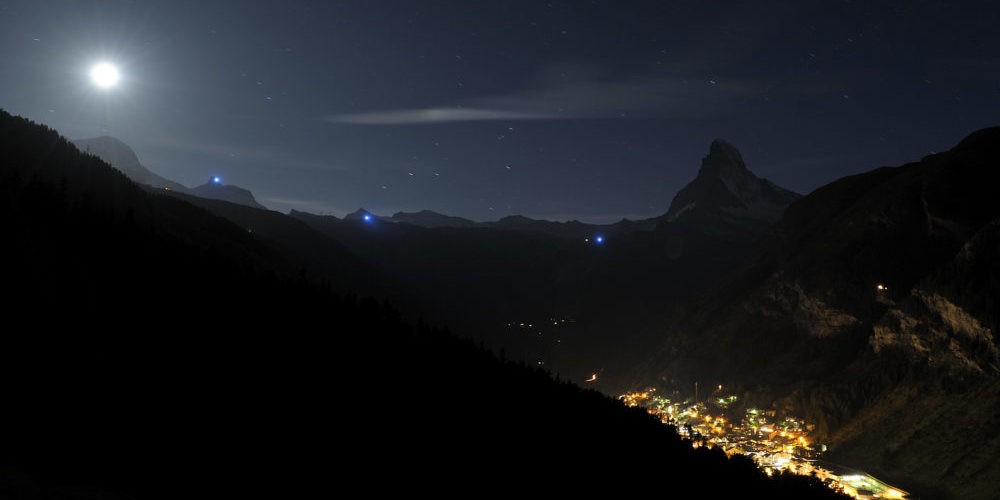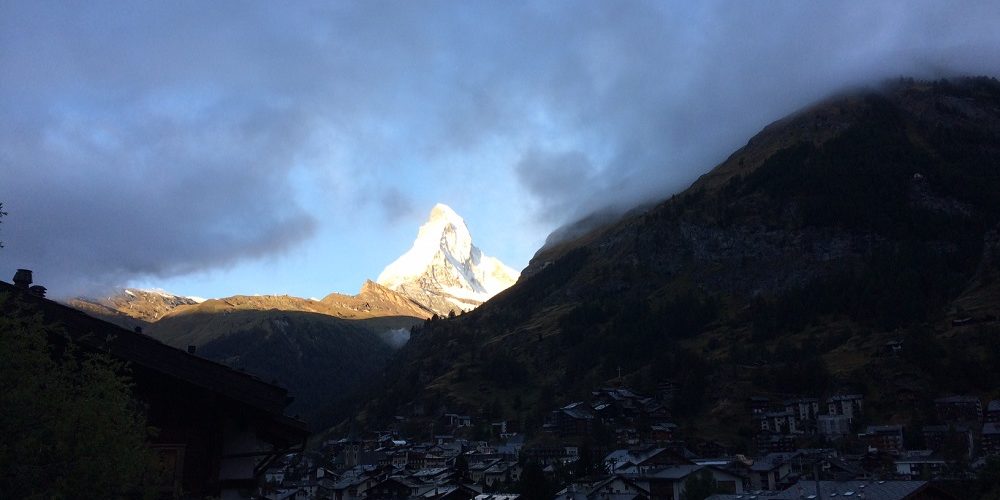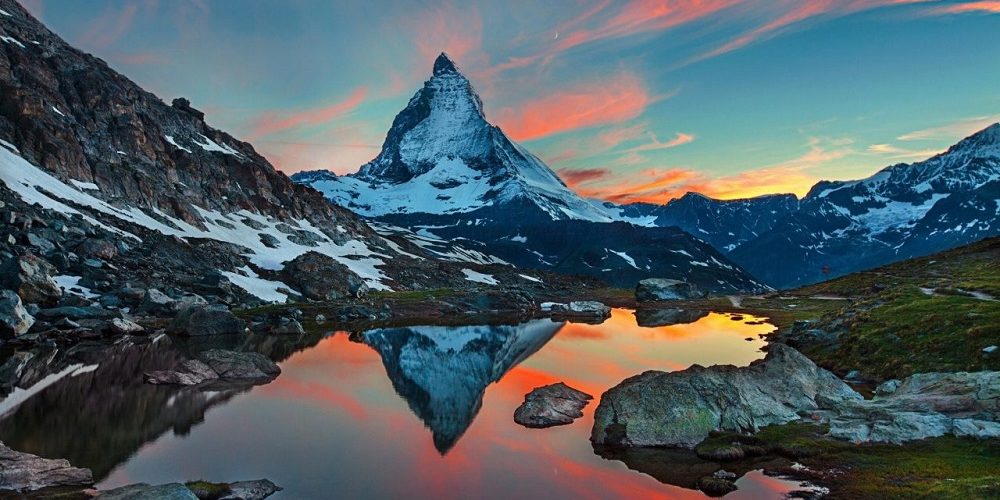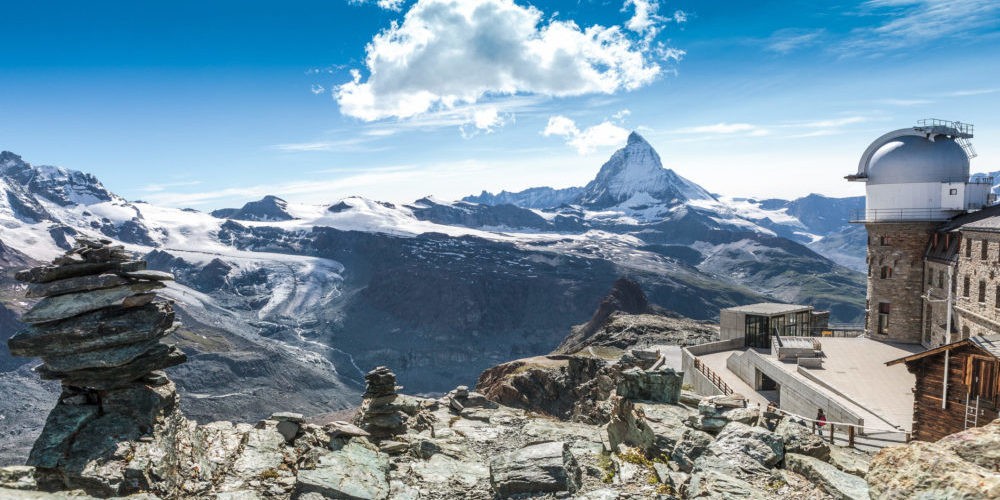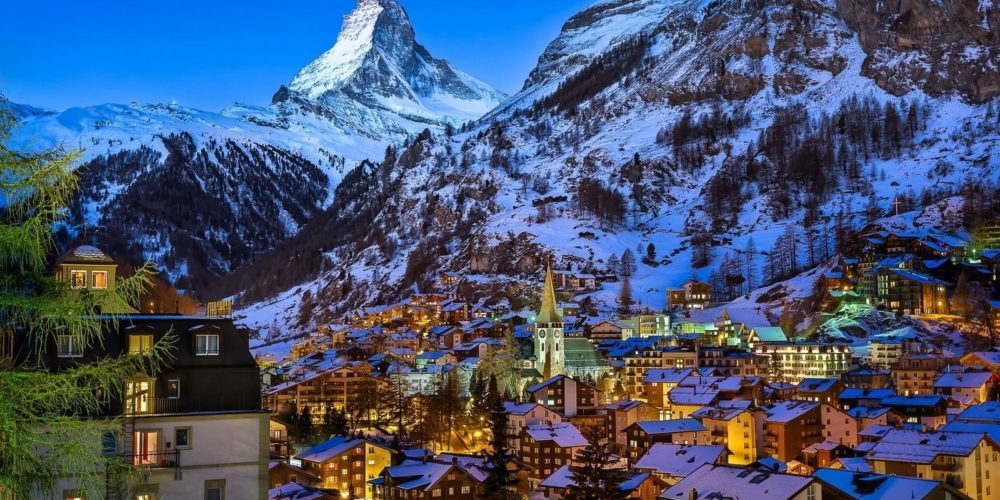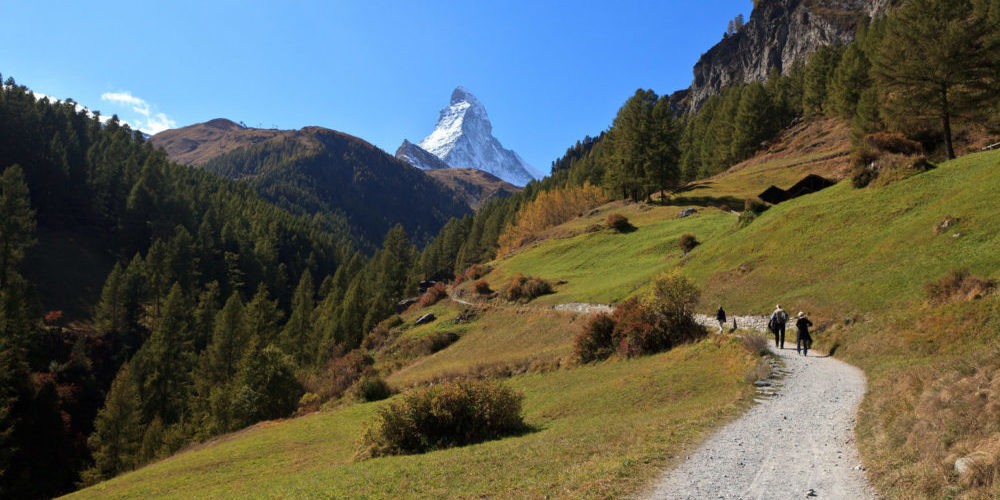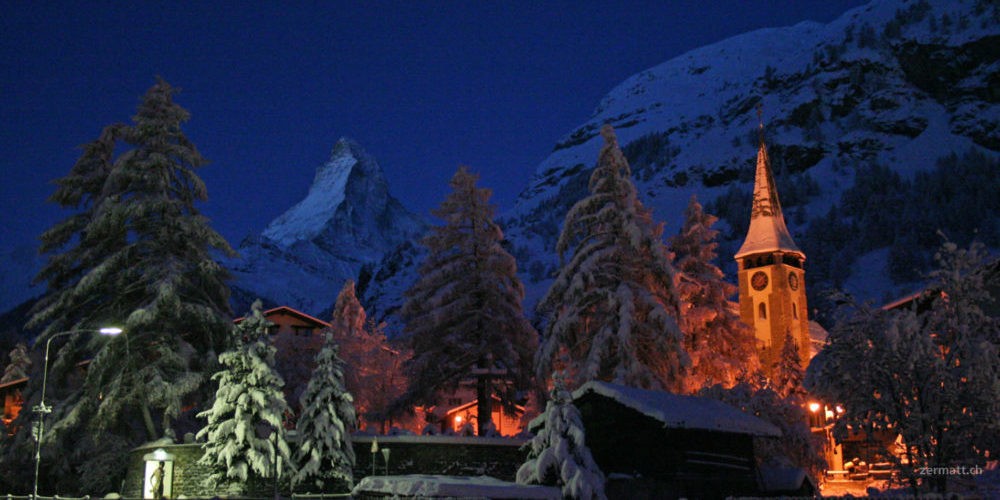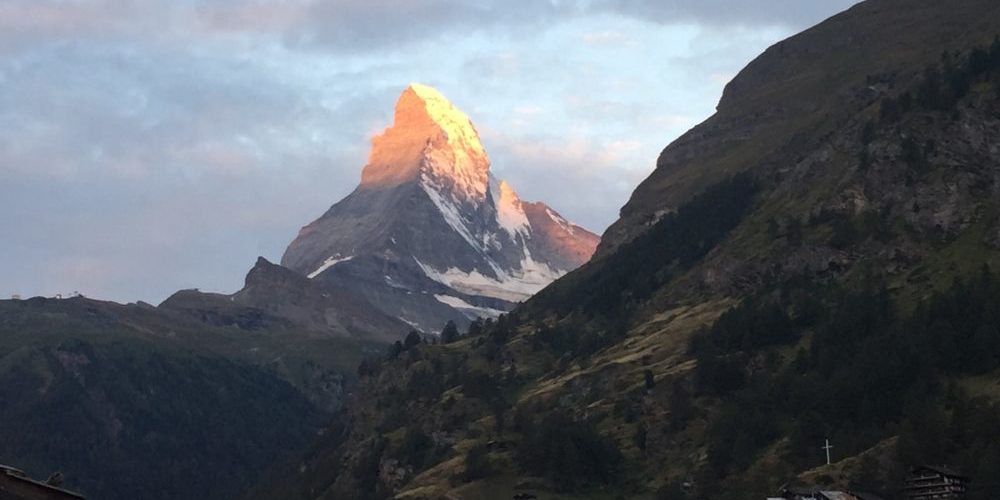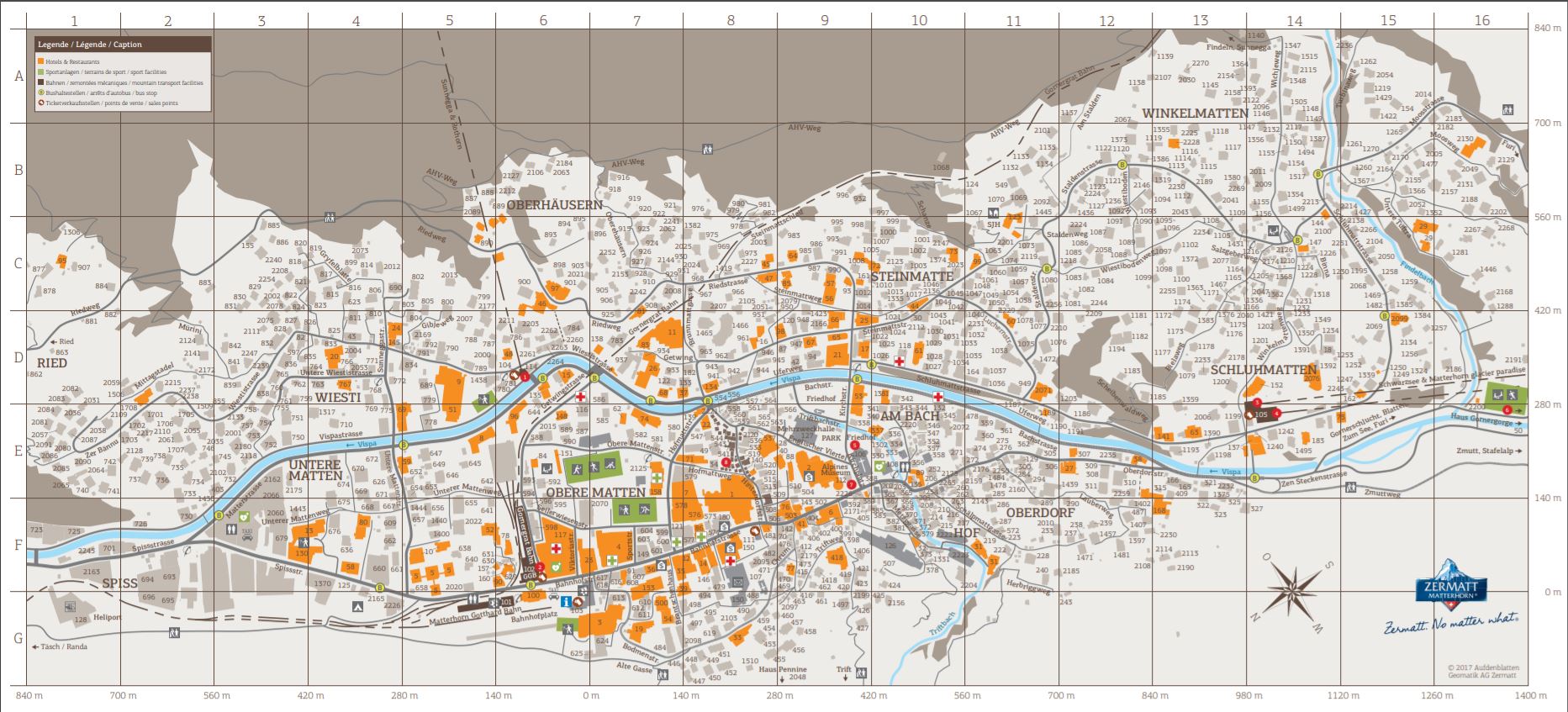Why Visit Zermatt, Switzerland?
The Matterhorn village in the heart of the Swiss alps. Regarded by many as Switzerland’s top ski resort and by those in the know as the world’s best, Zermatt is extremely picturesque, car-free and offers spectacular views of the Matterhorn and 28 other 4,000 metre peaks surrounding the mountain village. Known as the “Matterhorn Ski Paradise” the united Zermatt, Cervinia and Valtournenche ski areas offer one of the largest skiable domains in the world.
In addition to unrivalled winter sports opportunities, Zermatt offers a charming and bustling village, high mountain scenery, easy winter hiking trails, gourmet mountain restaurants, old churches, a sense of history, lively apres-ski, sophisticated live music, child-care and much much more. But also after the winter there are numerous Zermatt summer activities to enjoy during the summer and autumn months. In a nutshell: it ticks more boxes than any other resort we know; we chose Zermatt after having skied in all the best resorts of the world.
Zermatt’s top lift is the Alps’ highest at 3,800 metres, giving the world’s biggest pisted vertical of 2,359 metres. All year round glacier skiing and extensive snow making on the lower slopes guarantee snow from top to bottom throughout the season. The runs are well groomed and varied, offering both pleasure and challenge for beginners, intermediates and experts alike. There is more skiing than can be possibly done in one week. With the assistance of the local mountain guides, the terrain also offers near to infinite off-piste opportunities and the Alps’ most extensive heli-ski operation.
Other highlights of your stay will of course include the best selection of mountain restaurants in the world and an explosive après ski vibe. One can enjoy live music of a variety of kinds be it in mountain huts during the day or trendy jazz-clubs and piano bars in the evening.
When you need a break from skiing, there are a multitude of other activities, for example, take one of the many fantastic walks that lead into lost and forgotten hamlets nestled deep in the Alpine forests and let that mountain scenery take away all your cares.

History of Zermatt & the Matterhorn
Zermatt is famed as a mountaineering and ski resort throughout the Alps. Until the mid-19th century, it was predominantly an agricultural community. The town was “discovered” mid-century by British mountaineers, most notably Edward Whymper, whose conquest of the Matterhorn made the village famous.
The Matterhorn was one of the last alpine mountains to be conquered (in 1865), and the first expedition that reached the top ended dramatically with only 3 of the 7 climbers surviving the descent. The story is related in the Matterhorn Museum.
The first triumphant and tragic ascent of the Matterhorn in 1865 was followed by a rush on the mountains surrounding the village, leading to the construction of many tourist facilities.
The name of Zermatt, as well as that of the Matterhorn itself, derives from the alpine meadows, or Matten (in German), in the valley. The name appeared first as Zur Matte (“in the meadow”) and became later Zermatt. It does not appear until 1495 on a map or 1545 in a text, but may have been employed long before.
Praborno or Prato Borno are the older names of Zermatt; they appear in the ancient maps as early as the thirteenth century. The French-speaking people from the Aosta Valley used this name until about 1860 in the form of Praborne, or Praborgne. The reason of this change from Praborno to Zermatt is attributed to the gradual replacement of the Romance-speaking people by German-speaking colonisers.
Geography
Zermatt is a municipality in the district of Visp in the German-speaking section of the canton of Valais in Switzerland. It has a population of about 5,800 inhabitants.
The village is situated at the end of Mattertal at an altitude of 1,620m (5,315ft), at the feet of Switzerland’s highest peaks. It lies about 10km (6miles) from the 3,300 metres high Theodul Pass leading to Italy.
The village of Zermatt lies at the southern end of the Matter Valley (German: Mattertal), which is one of the lateral branches of the great Valley of the Rhone. The village is almost completely surrounded by the high mountains of the Pennine Alps among which is the Monte Rosa (or Dufourspitze), Switzerland’s highest peak at 4,634 metres above sea level. It is followed by the Dom (4,545 metres), Lyskamm (4,527 metres), Weisshorn (4,505 metres) and the Matterhorn (4,478 metres). Most of the Alpine four-thousanders are located around Zermatt or in the neighbouring valleys.
Zermatt is traversed by the main river of the valley: the Vispa, which takes its sources from the glaciers located at the feet of the highest peaks; the Gorner Glacier on the east side near the Monte Rosa and the Zmutt Glacier on the west side between Dent d’Hérens and Dent Blanche.
The village of Zermatt, while dense, is geographically small. There are three main streets which run along the banks of the river Matter Vispa, and numerous cross-streets, especially around the station and the church which forms the center of the village. In general anything is at most a thirty minute walk away. There are several “suburbs” within Zermatt. Winkelmatten, which was once a separate small hamlet, lies on a hill (1,670 metres) on the southern side. Steinmatten is located on the eastern bank of the main river.
A large number of hamlets are located in the valleys around Zermatt, they can be reached on skis or by walking. Their names are well known to many: Zum See, Zmutt, Findeln, Blatten.

You can really enjoy and appreciate Zermatt when you stay in one of our luxury catered or self-catered chalets.
